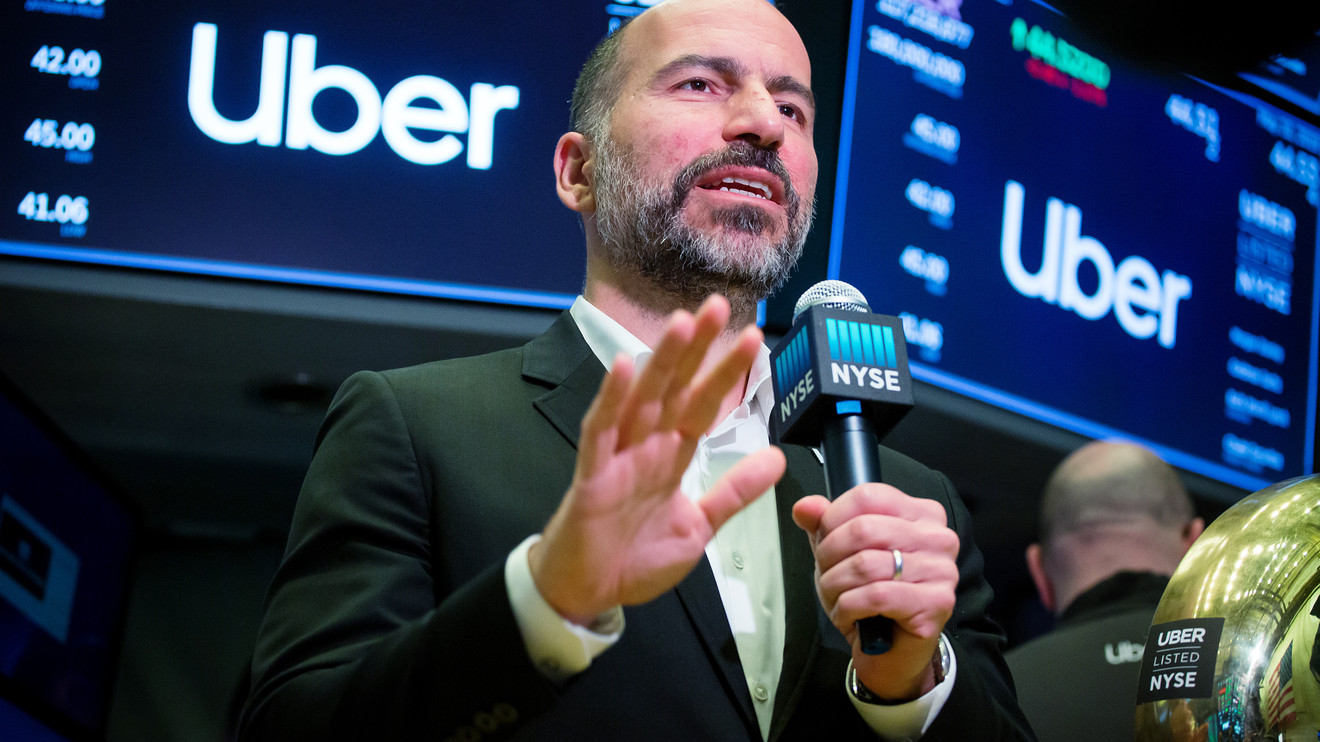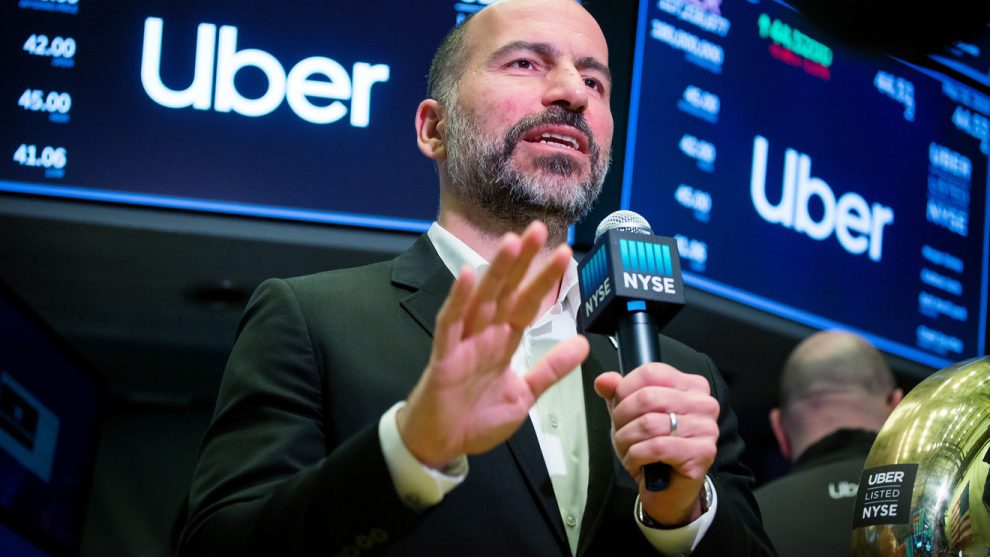
Uber Technologies Inc. shares plunged 12% in the extended session Thursday after the ride-hailing service reported a whopping $5.24 billion quarterly loss.
The company’s largest loss, equal to $4.72 a share, included $3.9 billion in stock-based compensation expenses related to its May IPO. Revenue improved 14% to $3.17 billion. Analysts surveyed by FactSet had estimated a loss of $2.03 a share on revenue of $3.3 billion.
The ride-hailing giant’s UBER, +8.24% second-quarter results released Thursday offer the latest proof that it has a long road to turning a profit. Uber has lost more than $6 billion so far this fiscal year.
“What Uber has yet to prove is if the cost of the ride can cover the operating expenses,” Beth Kindig, a technology analyst in San Francisco, told MarketWatch in a phone interview. “I don’t like the price war narrative. What we know is that gross bookings are growing but revenue is in the low double digits while losses are accelerating due to subsidizing rides.”
There is a bright side, which some investors noted in lifting Uber shares, which are now down 5.6%. Brutal price competition with rival Lyft Inc. LYFT, +3.00% , which drove down fares, appears to be lifting, and Uber reported a jump in revenue per customer. And on Wednesday, Lyft announced narrowing losses for its fiscal year and record revenue for its second quarter. A key driver: The lessening of tensions in its price war with Uber, which led to an increase in average revenue per customer.
Read more: Lyft sends stock on wild ride after earnings
For Uber, the mega-loss overshadowed some promising news. It reported 99 million monthly active platform consumers in the second quarter. FactSet expected 98.3 million. Gross bookings during the quarter jumped 31% to $15.76 billion, vs. $15.8 billion forecast by FactSet. Uber Eats, the company’s food-delivery service, grew 72% to $595 million from the year-ago quarter.
“We’re very confident that this company’s maturity can be cash-flow positive and the team is focused on being able to drive big-time growth at the top line while getting more efficient in all parts of the business,” Uber CEO Dara Khosrowshahi said in a conference call following the quarterly results. As proof, the company offered guidance of $65 billion to $67 billion in gross bookings for the fiscal year. (Uber also cautioned it will charge $450 million to $500 million in stock-based compensation expenses related to its IPO during its fiscal third quarter.)
“I think that there’s a meme around which is, can Uber ever be profitable,” he later acknowledged. “I think that myself and the team are well prepared, but I think we are very very early in this incredible journey.”
Khosrowshahi, in reply to an analyst’s question about regulatory proposals in New York and California, said the push for more stringent standards in New York was tantamount to another medallion system “rife for abuse.” He called a bill in California to change the status of drivers to full-time employees from contract workers can be modified to benefit both sides.
Uber stock overall is flat since its May IPO, though shares spiked 8% in regular trading on Thursday before its second-quarter results were announced. In comparison, the S&P 500 index SPX, +1.88% has gained 17% this year.
The company has endured a gantlet of unsettling events since it announced it lost more than $1 billion during its first-quarter results and limped through its slowest growth in years.
Last month, Uber announced the layoffs of 400 people, about one-fourth of its marketing team, to streamline operations. Uber employs more than 22,000 people worldwide.
Earlier this year, Uber’s chief operating officer and chief marketing officer departed. And it has lost three members from its now nine-member board of directors in recent months. In July, Arianna Huffington, founder of Thrive Global, and venture-capitalist Matt Cohler stepped down from their positions, though both said they were happy with Uber’s progress. In May, Ryan Graves, the company’s first employee, left the board.
Meanwhile, Uber continues to compete fiercely with Lyft. Stifel analyst Scott Devitt is particularly bullish about the latter of the two options.
“Pricing increases by Lyft, observed across a number of markets at the very end of 2Q and into 3Q, have the potential to offset some of the natural deceleration built into consensus forecasts and provide upside potential for 2H revenue/adj. EBITDA should demand remain healthy overall,” Devitt said in a July 31 note. Devitt reiterated a buy rating and $76 price target.








